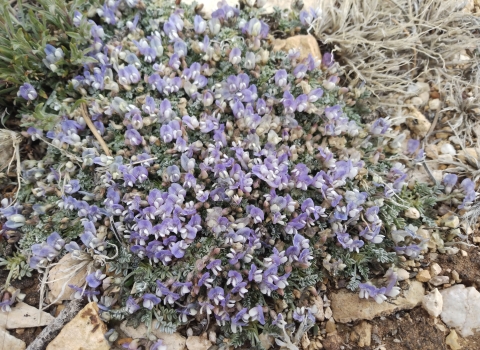The U.S. Fish and Wildlife Service, National Alliance of Forest Owners (NAFO), and the National Council for Air and Stream Improvement, Inc. (NCASI) have released a new resource that provides guidance for forest managers to support wood turtles on their woodlands.
"Wood Turtles: Conservation Considerations for Forest Landowners" recommends voluntary actions that managers of working forests in the Northeast can take to help conserve the species, which has experienced population declines across its range.
Developed with input from 16 conservation agencies and forest management organizations, the document covers:
- Wildlife-Friendly Practices: Specific forest-management practices that are not only compatible with, but beneficial for, wood turtles
- Strategic Timber Harvesting: Timing harvests to minimize disruption to wood turtle activities
- Mitigating Vehicle Risk: Implementing strategies to reduce harm to wood turtles from vehicular traffic
- Turtle-Friendly Stream Crossings: Guidance on materials and design, whether upgrading, replacing, or installing new structures
- Nesting Area Enhancement: Transforming excavated areas and former gravel pits into valuable nesting sites for wood turtles
“Wood Turtles: Conservation Considerations for Forest Landowners” is the first landowner outreach product to come out of the Wildlife Conservation Initiative, an unprecedented agreement between the Service, NAFO and the NCASI formalized in 2023 to advance the conservation of at-risk and listed species on private working forestland across the nation.
“Private forest owners are invaluable partners in wildlife and natural resource conservation,” said Wendi Weber, Northeast Regional Director for the U.S. Fish and Wildlife Service. “We’re excited to be collaborators in this effort to bring science-based resources to those who want to take proactive measures to support species on their land.”
The Service supports 10 Wildlife Conservation Initiative field research projects nationwide that are investing in research and resources to help partners conserve at-risk species, including a variety of mammals, pollinators, mussels, songbirds, and turtles.
“Private forest owners invest heavily in conservation efforts as a fundamental part of their stewardship ethic, said Dave Tenny, President and CEO of NAFO. “Our experience with the Wildlife Conservation Initiative demonstrates that the sustainable management of private working forests is an effective wildlife conservation solution. Through proactive, voluntary participation and collaboration, we can leverage our collective expertise to achieve positive results for wildlife like the wood turtle.”
The wood turtle was selected as one of the focal species for the Wildlife Conservation Initiative because it’s wide ranging —found in 12 states in the eastern U.S., four states in the northern Great Lakes region, and four Canadian provinces — and it often occurs on private lands. The species prefers cobble- and sandy bottom streams that wind their way through fields and forests where the turtles spend most of the summer foraging.
“NCASI is excited to be part of the Wildlife Conservation Initiative and using our technical expertise and experience to help deliver science-based solutions for conserving at-risk and listed species on private forestlands,” said Dr. Darren Miller, Vice President of Forestry Programs at NCASI, Inc. “Decades of research have demonstrated the conservation value of private forests and applying sound science to conserving these species is essential.”
In many areas throughout the wood turtle’s range, populations are declining as habitat is converted to other land uses. Habitat fragmentation increases the risk of car strikes when crossing roads. Illegal collection compounds these threats by removing healthy, mature turtles from breeding populations. In areas where forests dominate the landscape, landowners can serve as important stewards for this species.
The Wildlife Conservation Initiative is also supporting research to inform wood turtle conservation, including a study led by the University of Maine in collaboration with the American Turtle Observatory and the Maine Department of Inland Fisheries & Wildlife to better understand wood turtle population viability and habitat selection in mixed-used lands, like those managed by NAFO members. The Wildlife Conservation Initiative has also supported recently published research on wood turtles in Michigan.
The other collaborators on “Wood Turtles: Conservation Considerations for Forest Landowners” include:
- Maine: Maine Department of Inland Fisheries and Wildlife; Maine Department of Agriculture, Conservation, and Forestry; Maine Forest Products Council; and Maine Woodland Owners
- New Hampshire: New Hampshire Fish and Game; and New Hampshire Timberland Owners Association
- Vermont: Vermont Fish and Wildlife; Vermont Woodlands Association; and Vermont Forest Products Association
- New York: New York State Department of Environmental Conservation; and Empire State Forest Products Association
- National: Sustainable Forestry Initiative; American Forest Foundation; and Forest Landowners Association
To learn more, visit: https://wildlifeconservationinitiative.org/



